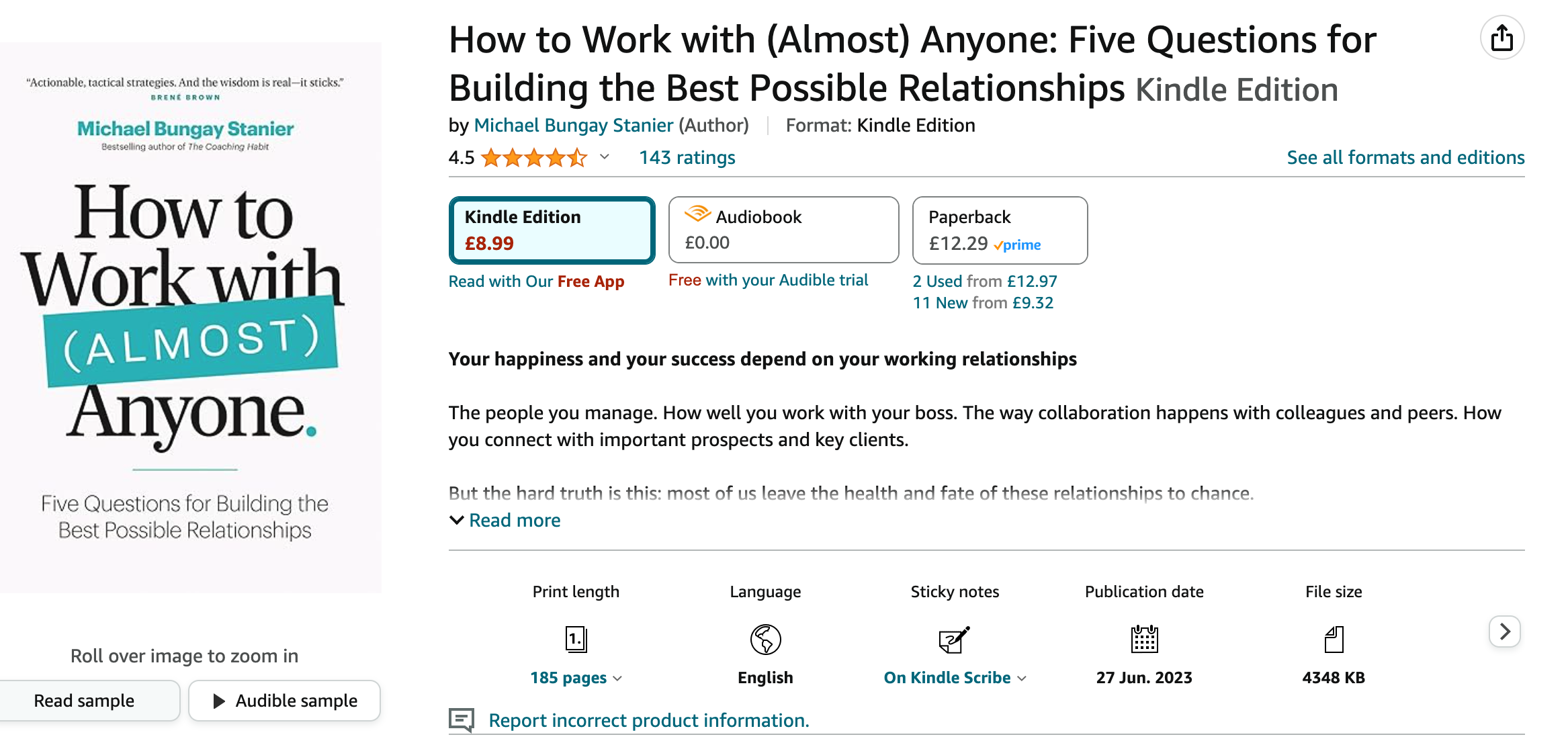Book Review: "How to Work with (almost) Anyone."
I recently finished reading "How to Work with (almost) Anyone" by Lucy Gill. This book was recommended to me by Lisa Strutt, and I'm glad I took the time to read it. It's a short but impactful read, packed with practical advice on how to improve your working relationships.
It delves into the complexities of interpersonal relationships in the professional world. The book provides actionable advice on navigating different personalities, work styles, and even conflicting agendas within a team. The content is rooted in psychological principles, yet presented in a way that's accessible for readers who may not have a background in psychology.

In previous jobs, especially in a high-pressure environments, this book could have served as a guide to managing intricate dynamics among colleagues and supervisors. The need to collaborate with various departments or clients—each with its own priorities and work culture—is a given. There were instances when projects were impeded not by technical difficulties, but by human ones—miscommunications, conflicts of interest, or just general lack of synergy within the team dynamic. The book's strategies for recognising and adapting to different communication styles would have been particularly beneficial in such situations.
In my current role at $BIG_CORP, the insights from "How to Work with (Almost) Anyone" have proven invaluable. Managing relationships is critical in any corporate structure but even more so in highly technical and collaborative roles like cloud architecture. My understanding of the team's diverse working styles has improved significantly, leading to more effective meetings and project workflows. For instance, knowing how to read cues for different communication styles has helped me tailor my approach, whether I'm explaining a complex system to engineers or presenting a project update to executives.
But the impact of this book extends beyond my professional life. It has also enriched my personal relationships. Understanding different personality types and their preferred methods of interaction has not only helped me in my dealings with friends and family but has also made me more empathetic and understanding as a person. By applying the principles from the book, I've found it easier to manage expectations and navigate conflicts, whether it's planning a family gathering or dealing with complex interpersonal dynamics among friends.